7 games that won't kill your integrated graphics laptop
Missing a laptop powerhouse? Don't fret – you can still play these
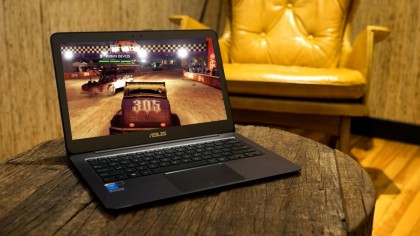
Introduction
All the most convenient laptops don't have dedicated graphics cards. It's just the way things work. Once upon a time, having dedicated graphics meant you could wave bye-bye to playing recent games without drastically lowering the resolution, and anything else the settings gave you access to.
But is that still true? We're testing the theory by playing a whole bunch of fairly demanding games on what is, gaming-wise, low-end hardware. With each game we'll state what laptop was used and the integrated graphics solution inside, along with the game's graphics quality settings and frame rates achieved.
So don't fret: gaming on the go is do-able when it comes to these titles. Just remember to lower the graphical settings – and, more importantly, your expectations.
- Looking for a new laptop? Check out our guide to the best laptops you can buy in 2015
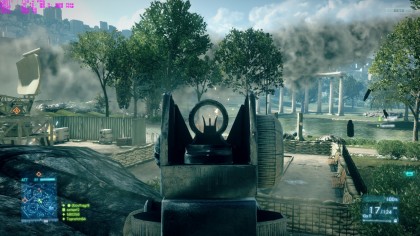
1. Battlefield 3
- Laptop: HP Spectre x360 (CPU: Intel Core i5-5200U, Graphics: Intel HD5500)
- (1080p) Low: 14fps
- (720p) Low: 19-24fps
Just like Crysis 2, Battlefield 3 doesn't seem like it was made with lower-end computers in mind. At the lowest setting the Intel HD5500 GPU struggles pretty badly at 1080p, meaning the game lacks the smoothness it needs to feel right. This is a shooter, after all.
You just wouldn't want to play it like this. The only way we got it to a playable level was by dropping the resolution to 720p. This also results in the display only taking up about half the screen vertically and horizontally (there's probably a way to stretch it out). The only solution we've found so far to get it to fill the whole space is to change the laptop's resolution on the desktop. Not great.
Given Battlefield 3 doesn't really look all that amazing at its 'low' setting we're a bit disappointed by the ropey performance here. But then this was an AAA game, and 2011 was just a few years ago.
How playable is it? With a bit of patience Battlefield 3 is worth playing, but only at 720p.
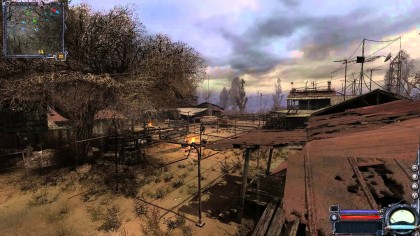
2. S.T.A.L.K.E.R: Clear Sky
- Laptop: HP Spectre x360 (CPU: Intel Core i5-5200U, Graphics: Intel HD5500)
- (default) 1024 x 768, high: 15fps
- (1080p) Maximum, static lighting: 35-60fps
- (1080p) Minimum, static lighting: 55-60fps
- (1080p) Medium, Enhanced Full Dynamic lighting: 9-15fps
This is more like it. Stalker Clear Sky isn't just like any other game out there – it's bleaker, browner and it shows more frame rate variation than all others. This is one of the few games that can reach 60fps with integrated graphics on some settings, and yet struggle to reach 10fps on others.
It's all about dynamic lighting: use it and the Intel HD5500 struggles; turn it off and the game flies. The problem is that Clear Sky looks totally different without any dynamic lighting – it's even duller, even more depressing.
Keen to keep a bit of dynamic lighting involved (there are multiple levels), we switched it to 'object only' and toned the environmental detail down to 'low'. With these settings you'll get around 20fps, high enough for the game to be fun to play, and still pretty (in a violent apocalypse kinda way). It's not ideal, but we preferred this to how the game looks with dynamic lighting switched off entirely.
How playable is it? Flick the resolution down to 1,600 x 900 and you'll squeeze a more comfortable 25-30fps out. The resolution drop is pretty obvious, though.
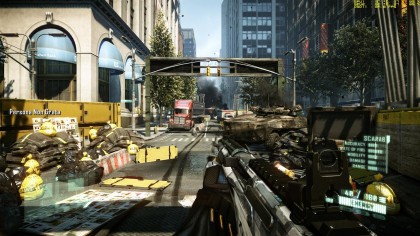
3. Crysis 2
- Laptop: HP Spectre x360 (CPU: Intel Core i5-5200U, Graphics: Intel HD5500)
- (1080p) High: 12fps
- (720p) High: 17fps
- (1080p) Ultra: 5fps
The Crytek team prides itself on catering for the high-end crowd with its game engine. It's no surprise, then, that Crysis 2 doesn't work at all well on Broadwell integrated graphics. Sorry folks, it's unplayable at 1080p. The issue is not so much that Crysis 2 is better looking than any other game out there – after all, it's getting on a bit.
The problem is that 'High' is the lowest spec you can choose for each of the graphics parameters. Of course, this means nothing really, but tells you that it's really not designed for the sort of hardware we're using here.
Stripping back all the visuals to the minimum available through the 'advanced' graphics tab, we got Crysis 2 up to around 12fps at 1080p. However, it's still clear there's a fair amount of graphical wizardry going on. To play Crysis 2 with this hardware you need to start lowering the display resolution. 1440 x 900 is still a bit too slow at 15-17fps. You really need to drop down to 720p to make the game remotely playable. And even then it's not totally smooth.
How playable is it? Barely, but at 720p the answer is a softly spoken "yes".
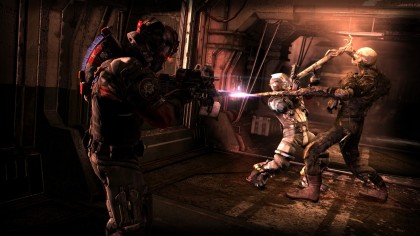
4. Dead Space 3
- Laptop: HP Spectre x360 (CPU: Intel Core i5-5200U, Graphics: Intel HD5500)
- (1080p) Low: 25-40fps
- (1080p): Medium: 15-17fps
What a difference a couple of years makes. Where some of EA's 2011 games see the Intel HD5500 struggle pretty badly, the 'low' setting of Dead Space 3 seems purpose built to work very well with integrated graphics, or at least low-end dedicated cards.
Performance is solid – smooth enough to make the game enjoyable and to avoid ruining the game's scary bits. Stepping up to medium and high settings sees the usual stutter of the laptop not being able to quite keep up, with frame rates of 15fps at Medium.
Sadly, though, this is a game that benefits quite a bit from the extra lighting atmospherics of the higher-up graphics settings. The low setting flattens the visuals out quite a bit, more so than (for example) the low setting of Skyrim. While there's a fair amount to detail, the textures in Dead Space 3 look as though they're made with plenty of dynamic lighting and shadow effects in mind.
How playable is it? Very playable and, judging by our play-through of the first part of the game, still pretty scary.
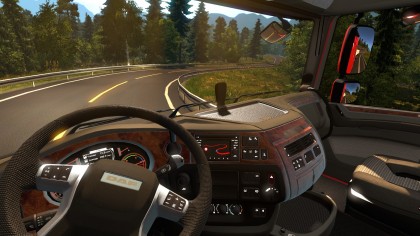
5. Euro Truck Simulator 2
- Laptop: HP Spectre x360 (CPU: Intel Core i5-5200U, Graphics: Intel HD5500)
- (720p) Low (v sync disabled): up to 58-59fps
- (720p) Medium: 30fps (cap)
- (1080p) Low: 30fps or up to 42fps with v sync disabled
- (1080p) Medium: 15-30fps
- (1080p) High: 15fps
- (1080p) Ultra: 10-12fps
Cult favourite Euro Truck Simulator 2 might not be your go-to Steam pick, but it's a highly scalable game that works pretty well on integrated Broadwell graphics – up to a point, anyway.
If you're willing to stick to 720p resolution you can crank the graphics up reasonably high and still achieve playable frame rates. It's a little trickier with 1080p, with the 'Medium' setting dipping from the smooth-ish 30fps when you find yourself in anything approaching a bit of traffic. You do want to use 1080p really, though, as 720 looks very soft, emphasised by the amount of far-off detail.
Euro Truck Simulator's 2's visuals also suffer quite a bit if you can't afford to use any anti-aliasing, what with the landscapes being filled with tiny converging power lines that look pretty terrible without it. Still, as the game gives you a decent amount of control over the settings in its Advanced mode, you can get a pretty good result by turning almost everything off but aliasing, and then using anisotropic filtering to 'fake' detail by just adding more roughness to the textures.
How playable is it? Plenty. It just needs some tweaking to get it looking its best.
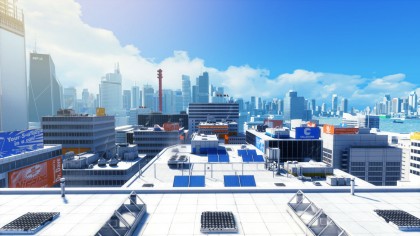
6. Mirror's Edge
- Laptop: HP Spectre x360 (CPU: Intel Core i5-5200U, Graphics: Intel HD5500)
- (1080p) Low: 25-30fps
- (1080) Everything high: 10fps
Mirror's Edge was not a great success, but remains one of the most interesting action games of the last 10 years. Its style also seems like one that would work on lower-end hardware. Its stark, often over-exposed cityscapes don't need ultra-high texture detail to look good.
As hoped, Mirror's Edge works really quite well on our Intel HD5500 system, managing a solid and respectable 25-30fps when AA is turned off and texture detail is set to minimum. It looks pretty good too, although you miss out on the ultra-clinical sharp look the game is really meant to have.
Turning off AA means distant city details and angled building appear a bit jaggedy, shadows are pretty low-fi on the basic setting and some textures are missed. For example, when you put your hands up against a wall on running into it, they're basically blurry messes, rather than the detailed models they are at the top-end setting. Still, from memory this is roughly what you get with the console version of Mirror's Edge. Forget the missing flash and just embrace the nausea.
Playable? Around 30fps at low detail, 1080p: two thumbs up
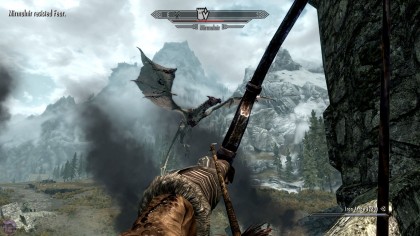
7. Skyrim
- Laptop: HP Spectre x360 (CPU: Intel Core i5-5200U, Graphics: Intel HD5500)
- (1080p) Low: 28-32fps
- (1080p) Medium: 12-13fps
- (1080p) high: 6-8fps
- (1080p) ultra: 5-7fps
What was once the high water mark of PC graphics is now something that'll run on humble hardware. That's right, Skyrim runs perfectly well on integrated graphics. You can even stray slightly above bog-standard settings, although we were pleasant surprised by how decent the game look at its bog-standard 'low' graphics setting in its latest build.
The Medium setting turns on things like better water effects and more shadow effects, although it's a bit too jaggy to really run well on the HP x360. 12fps just isn't fun. However, by flicking off that's anti-aliasing that's turned on with Medium we were able to get up to a solid 24fps-ish while getting a really quite remarkable level of graphical fidelity for a totally non-gaming machine.
It doesn't seem as though the whole environment has been stripped back to the basics, with plenty of rolling foliage in the game's outdoors areas. There's also a rich look to the game without using the full extent of its lighting effects, likely down to optimisations since the game was launched way back in 2011.
We get the feeling that if you're stuck on a Haswell-generation machine you might have to stick to the Low setting to get solid performance, but it's still worth playing. Just out of curiosity we tried Skyrim at its highest Ultra setting, and predictably enough it became a picture show at around 6fps.
How playable is it? Plays great at 1080p, low settings or at a push Medium with AA turned off.

Andrew is a freelance journalist and has been writing and editing for some of the UK's top tech and lifestyle publications including TrustedReviews, Stuff, T3, TechRadar, Lifehacker and others.